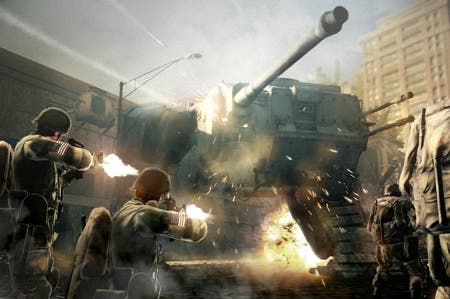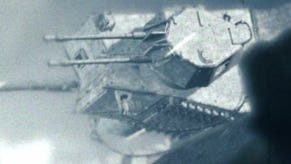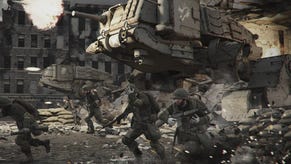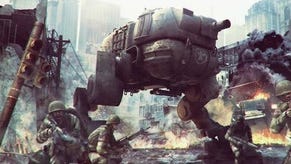Steel Battalion: Heavy Armor Review
Mechs and death.
The great thing about buttons - whether they're on your doorbell, mobile phone, game controller or even plastered all over an elaborate mech-simulation peripheral that comes with its own Allen key - is that when you push them into the recess and feel that satisfying click as the contact hits the mark, you can be around 99.99 per cent sure that your action will have the desired result. It's a principle that gaming has embraced since its earliest days.
So the rise of motion controls in casual gaming presents developers with a dilemma. On the few occasions that the semaphore lessons have been shoehorned into a more weighty title, the results have been average at best - Zelda: Skyward Sword notwithstanding. So when Capcom announced that Dark Souls developer From Software was going to make a Kinect-based follow-up to the hardcore mech simulator Steel Battalion, we were naturally apprehensive.
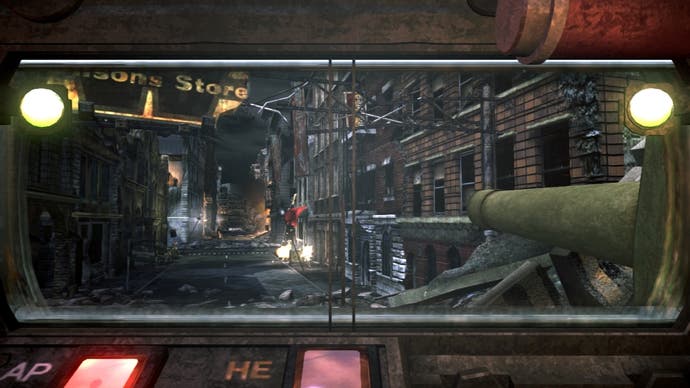
On paper, it seems logical. Ditch the gear lever, double joysticks and three pedals that made the original feel like a driving test from the year 2100, and in their place give the player some on-screen buttons and levers that they can manipulate with hovering appendages. You start by using your right arm to crank the VT (Vertical Tank) to life. Then, by using your outstretched hands to grab onto the handholds below the viewing hatch, you can pull yourself closer to get a forward-facing view. It's then a case of looking and moving with the dual analogue sticks on your regular controller.
Thankfully, Heavy Armor doesn't rely on Kinect exclusively, as in terms of evading enemy artillery and firing your cannons, the control pad offers the necessary precision. But for all ancillary actions such as activating a temporary speed boost and switching between the two main ammo types - AP rounds for armour and HEAT rounds for infantry - you have to fumble the air.
This isn't too bad during the initial training, as you're under no threat of being smashed to smithereens. But this all changes during the first mission of a 32-strong campaign; once you head out onto the beach for a Normandy-like landing, you'll likely meet with your first death in a matter of minutes. It could come from the mortar fire that's guaranteed to hit if you stand still, the mine detector that sounds too late as you advance forward, general confusion over the current mission objective or - perhaps most frustratingly - failing to lower the blast shield before a HEAT shell thunders through the gap and kills you and your crew. But whatever the cause, you'll blame the controls.
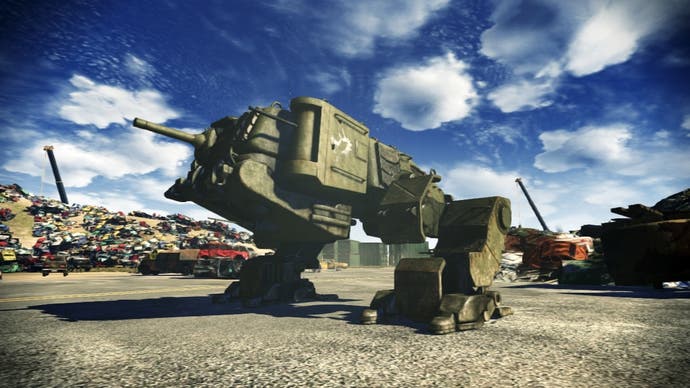
Certain actions - such as standing up to open the VT hatch and then looking through a pair of binoculars by bringing your hand to your face - can be performed consistently without any hassle, while others can go wrong much more easily. When the VT starts filling with smoke, for instance, you have to return to the cockpit view, pull up a panel and grab the ventilation lever before pushing the panel back and returning to the outside conflict. There's so much that can go wrong if you don't perform each motion flawlessly, with death by smoke inhalation being the worst case scenario.
Is this just a case of From Software sticking to its own brand of sadism, or is Kinect just not up to the job? It feels like a bit of both, but to From's credit, the war-ravaged world it has created is strangely compelling. The game is set in a dystopian future where a silicon-eating microbe called "Datacide" has destroyed most of the planet's computers. This has returned the world to an even footing in terms of military prowess, and with the rise of mechanical VTs, the United States finds itself in open warfare with the Chinese "Uncle" forces.
The first campaign has you liberating an occupied New York by blowing up bridges and rescuing stranded units. Then, as the story introduces dark themes of human experimentation, you have to destroy battleships at an Uncle navy base, search for a lost oasis in a Moroccan desert and disable a huge railway gun in Poland. While the original Steel Battalion put a firm emphasis on the Vertical Tanks, Heavy Armor goes for a significantly more human approach, with three crew members - two loaders and a co-pilot - that provide a profanity-ridden commentary through each mission.
"Would Heavy Armor be a better game if it ditched Kinect? In all honesty, no."
Combined with the macabre cut-scenes and the graphic way in which you can knife an enemy soldier in the neck, it gives the game the vibe of a Vietnam war film. You're even presented with a platoon photo at the start of the game that depicts all 32 members of your squad, only to see them fade one by one as they fall in battle. It's only by playing through each mission again and going out of your way to keep them safe that you can end the game with no platoon casualties.
Whether or not you'll bother depends on how much love you have for simplistic enemy AI and archaic level design. Although Heavy Armor is unapologetically hardcore in its approach, the challenge is circumvented once you memorise the location of each VT and bazooka trooper. And while control issues can sometimes screw you over when things don't go according to plan, it's often all too easy to just poke your right cannon over an obstacle and watch as the enemy makes no effort to improve their position as you pepper them to death.
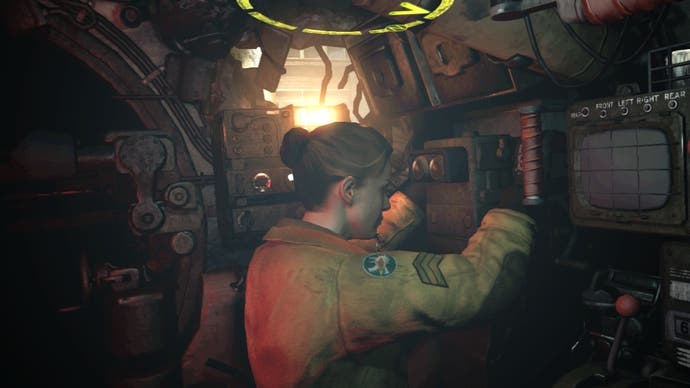
Another disappointment is the lack of multiplayer outside of four-player co-op. Heavy Armor feels like half a game when compared to From's work on Chromehounds and Armored Core 5. It's also hard not to feel short-changed when you realise that there are only three very similar VTs to pilot - although, in terms of customisation options, you can earn everything from armour upgrades and 20mm auto-cannons to rear mortars and high-velocity ammo.
Despite being a very different game to the Capcom-developed originals, Heavy Armor's biggest surprise comes around halfway through the campaign. You'll have died countless times and endured your fair share of Kinect-assisted bungles, but by keeping your cool and powering through the bite-sized missions with rabid determination, you'll have developed a system of properly timed gestures that make the piloting duties more bearable. It won't be foolproof, and there'll be times when you'll flip the glass on the self-destruct button to save the enemy the trouble. But in terms of making the player feel like a mech commander, From could have done a hell of a lot worse.
Would Heavy Armor be a better game if it ditched Kinect and focused purely on the tried-and-tested buttons? In all honesty, no - because without the novelty of raising your arm to pull down a periscope or punch your fleeing co-pilot in the face, this would be a comparatively dull experience. As it stands, it's an interesting experiment which - somewhat ironically - fails to justify the cost of an expensive peripheral. But if you already own a Kinect and fancy something more substantial, then Heavy Armor is worth a look because, at least, it dared to try.
